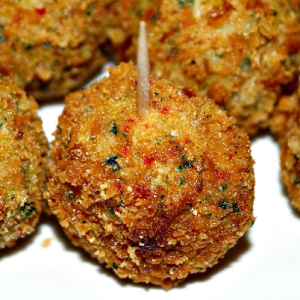It’s a new year, and we’re taking a new, adventurous tack with our ‘Expedition To…’ series. This week, we’re visiting Sierra Leone, on the extreme west cost of Africa, in the midst of what was once the heart of the slave trade. Now, though, Sierra Lone is trying to make a name as a tourist destination…
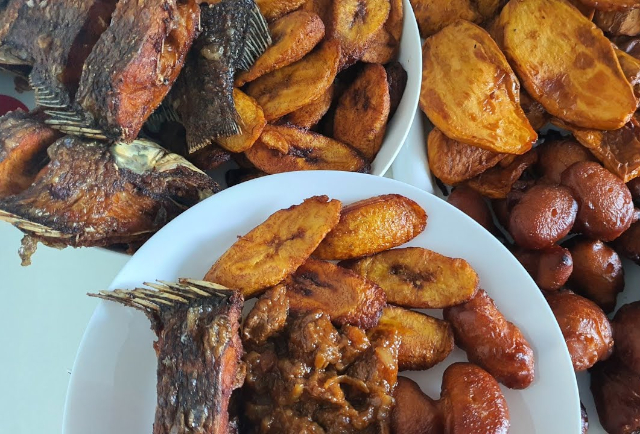 Sierra Leonean Fry Fry: The King of West African Street Foods!
Sierra Leonean Fry Fry: The King of West African Street Foods!
The tiny coastal republic of Sierra Leone, sandwiched in between Guinea and Liberia, is a land of fabulous beaches and wild expanses of forest, savanna and mangroves. Agriculture, lumbering and mining are putting tremendous pressure on the nation’s internal resources, though, as it tries to build a stronger economy. A growing population is also raising concerns about over-fishing in its offshore waters.
Amid the turmoil of modernization, Sierra Leone is also trying to promote itself as a tourist destination. The problem is, it’s still a wild-west sort of place, and most western nations advise varying degrees of caution if you want to get in on the sun-and-sand gold rush there.
“Opinions differ about the safety of travelers in Sierra Leone,” WorldNomad.com says. “According to official government warnings, it’s a crime-riddled, corrupt and dangerously un-regulated country. However, many travel bloggers disagree, saying Sierra Leone is one of the friendliest places in West Africa known for its beautiful beaches. […] The truth is, it’s a bit of both, and your view of the country will be determined by your own personal experience. […] “The U.S. Department of State says to ‘Exercise Increased Caution’ and the Australian, Irish and Canadian Government’s advice to their citizens is to ‘Exercise a high degree of caution’. Check with your Government’s travel advisory for the most up to date infromation.
In short, Sierra Leone is not a place to flash a big bankroll, a high-tech phone or fancy duds. That’s like painting a bullseye on your back for the criminal element.
Tribal influence strong
Sierra Leone’s tribal history still exerts a strong influence on its culture, particularly on the nation’s diet and dining preferences.
Rice is an overarching presence in the lives of Leoneans. They eat it at virtually al meals, every day of the week. So, it follows that they have uncounted ways to serve rice, usually topped with traditional sauces, soups and stews. The nation’s towns and cities overflow with street foods, including fresh fruits, fried plantains, potatoes and cassava, popcorn, peanuts, roasted corn, bread, and grilled skewers of meat, sigh and seafood. And Ginger Beer just might be the unofficial national beverage.
On our menu today
Plasas: Leaf Stew. It’s like wilted spinach in a savoury sauce. But the Leoneans also use potato, cassava, and kale. The leaves are first boiled, then sautéed in oil with hot peppers, onions and either meat or fish. It’s always served over plain boiled rice.
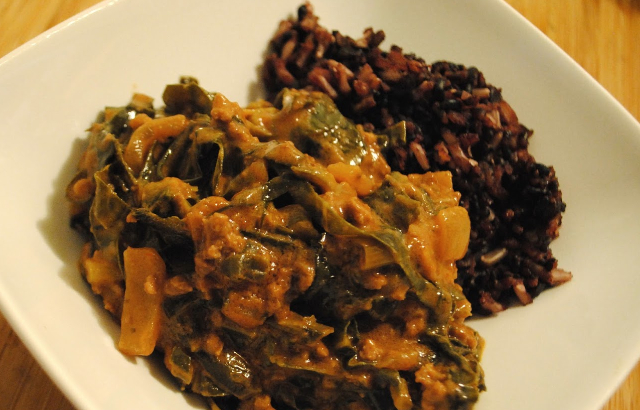
Plasas is simple to make, and apparently tastes great – though it might be a little hard for some to look at. It is, nevertheless, the national dish of Sierra Leone.
Krinkrinand: Fish balls. A party treat as well as an everyday snack (if you’re lucky!) every kid wants them at their birthday party! (See photo, top of page.) Based on fresh whitefish fillets – preferably grenadier – it’s a mash of fish, onions, bread crumbs, garlic, black pepper, chilies, and chicken stock. Formed into golf-ball-sized balls, the Krinkrinand are coated with bread crumbs and deep-fried in oil. Drained well, they are usually served on party picks or small wooden skewers, looking for all the world like breadcrumb lollypops!
Oleleh and Agidi: Close sisters, varying only in the starch they are based on. Oleleh (pictured below) is based on black-eyed peas which are cooked and mashed with onions, oil and spices.
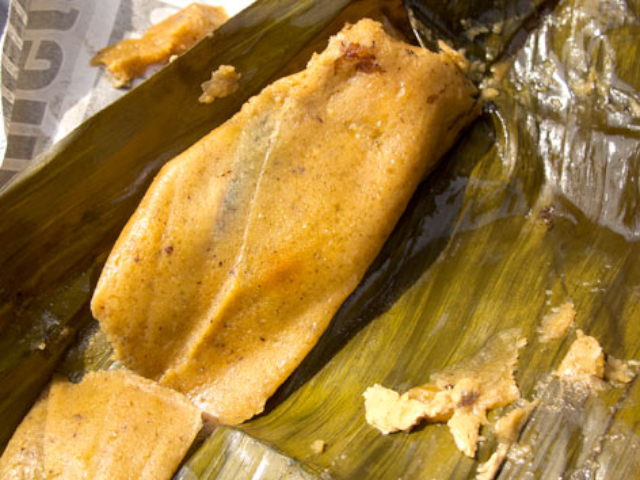
Agidi is virtually the same dish, based on pounded corn. Either way you make it, it’s wrapped in banana leaves and steamed. Now we know where the Tamales of the Carribean came from…
Yebe: A Chicken ‘Harvest’ Stew. It’s a special stew that requires some work and time, but pays off big in flavour. Afrogistmedia.com says: “[It] reflects the harvest of the Mendes in that it basically combines cassavas, yams, chicken, onions, stock, chili, and other traditional spices. The resulting dish is vibrant and savory.” Yebe is thick, rich and full of flavour, and always served over rice.
‘Roast’ Pepper Chicken: This a very spicy dish, cooked in a thick, zesty marinade/sauce of tomato paste, peanut butter, onions and Scotch Bonnet peppers.
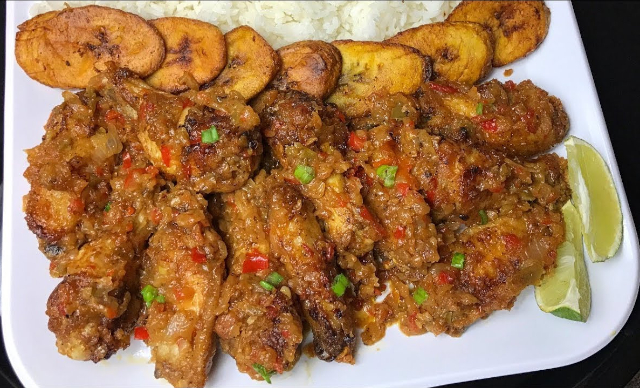
This recipe gives you the essentials of the traditional, tribal preparation, updated just enough to be makeable in a modern kitchen. Hint: You can use less-spicy peppers to suit your taste. Scotch Bonnets aren’t everyone’s ‘cup of chili’.
Fufu: An alternative to rice. It’s Cassava-based – cassava paste that’s been left to ferment for a few days. It’s then cooked into a sort of porridge, and formed into balls or logs. These are sliced for serving. FuFu (also called ‘Foofoo’ in some places) is native to Ghana but is a staple in Sierra Leone and other West African countries.
Jollof Rice: A mix of Rice and Beans flavoured with tomato and onion and baked in the oven.
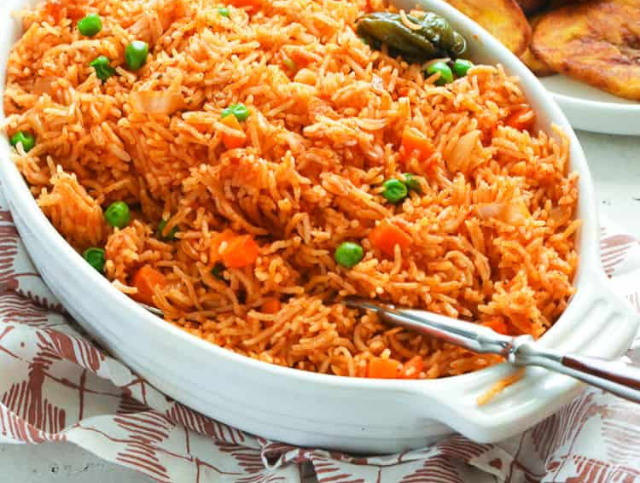
A complete protein source for vegetarians and vegans, and a satisfying one-dish meal for anyone.
Fry Fry: King of the Sierra Leonean street foods! All manner of eats are grilled and fried up, including Akara, Gari cakes, fried plantains, french fries, bongo (smoked herring), and fried chicken. Also meat and seafood skewers, all served with rice vermacelli noodles or bread, with hot pepper sauce and hardboiled eggs on the side.
Small country – big cuisine!
Although a few of its favourites are borrowed from or shared with other West African countries, most of Sierra Leone’s top dishes are trademark, traditional Leonean. Tomorrow, we’ll learn more ab0ut the country’s equally delectable baked goods and breads…
~ Maggie J.

